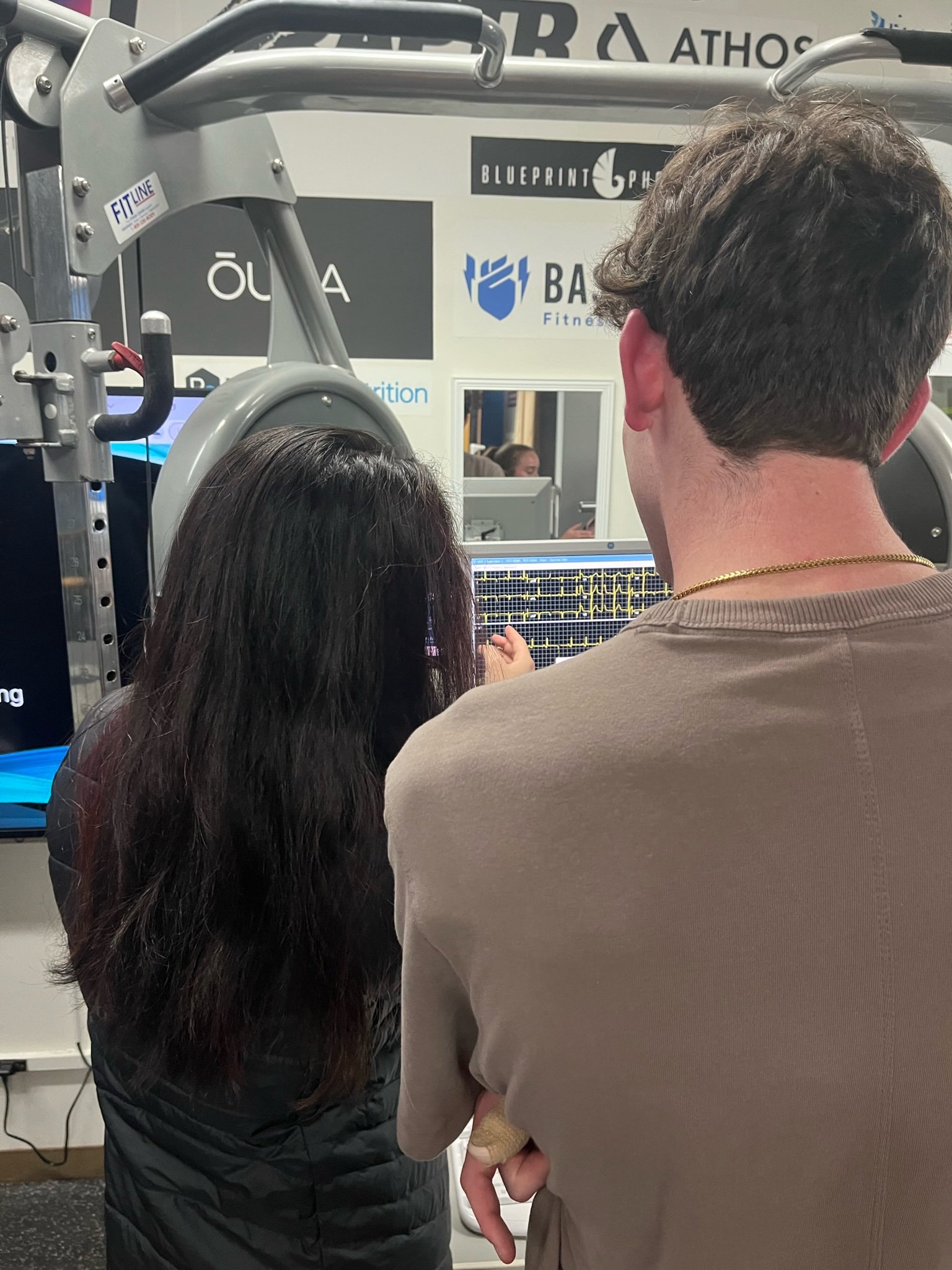Performance Tracking
Performance tracking involves the aggregation of one’s physiological metrics in various settings during exercise, activities-of-daily living, and sleep. UC Fit’s Digital Health Network (DHN) web portal, combined with a wearable physiological status monitor (PSM) chest strap and smartphone technology, allows the collection of these metrics in real-world environments while actually performing the activities of interest.
Why is it important?
Performance tracking provides a look “inside” the body during rest and physical activity. The chest strap measurements are low-hassle, non-invasive, and include heart rate, EKG, breathing rate, and triaxial accelerometry – all without probes and wires connecting you to sophisticated lab equipment. Real-time feedback via a rich visual user interface (smart phone) with further integration on the web (DHN portal) allow for (i) intuitive monitoring/tracking of progress over time, (ii) actionable feedback, (iii) motivation to ensure compliance, and (iv) guidance and mitigation strategies addressing the obstacles that prevent you from maintaining a healthy lifestyle.
How is it assessed?
While donning the wearable PSM, real-time sensor data tracking will graphically display the level of exertion and physiological data on the DHN smartphone app. Subsequently, after uploading the data to the DHN web portal, customizable activity reports are generated that provide meaningful summaries of exercise, activities of-daily living, and sleep. The physiological metrics include:
Activity: Type of the activity performed during the session
Start: Time when a specific activity session was initiated
Duration: The number of minutes the activity lasted
THRZ: The number of minutes during the activity spent within prescribed target heart rate zone
THRZ%: Percentage of time spent in the THRZ with respect to the total time spent in an activity
RPE: Rating of Perceived Exertion on a Borg 6-20 scale as inputted by the user at the end of each activity session
Average HR: Mean heart rate during the activity
ΣA: Estimated activity intensity from the motion sensor
CVSI-rest and CVSI-85: Cumulative indices of cardiovascular strain (Cardiovascular Strain Index (CVSI)) based on heart rates above the resting value and above 85% of age-predicted maximal heart rate
What to expect during the assessment:
You will be loaned a UC Fit Digital Health Lab PSM, chest strap, and smartphone interface for this assessment.
You will be instructed on how to set up, don, and doff the wearable PSM and utilize the DHN portal from your home.
An agreement will be arranged between both parties on the length of the measurement period and meaningful results contained within your online performance tracking report.
Participant preparation:
Test validity and data accuracy are greatly improved by adhering to the following guidelines before your assessment. Your test(s) will be given on the assumption that you have followed these recommendations:
This assessment requires a clear view of the contours and anatomical landmarks used for references in defining body segment alignment. Subsequently, the minimal amount of clothing necessary to maintain participant comfort and modesty is recommended. Athletic attire will usually provide the best results.
